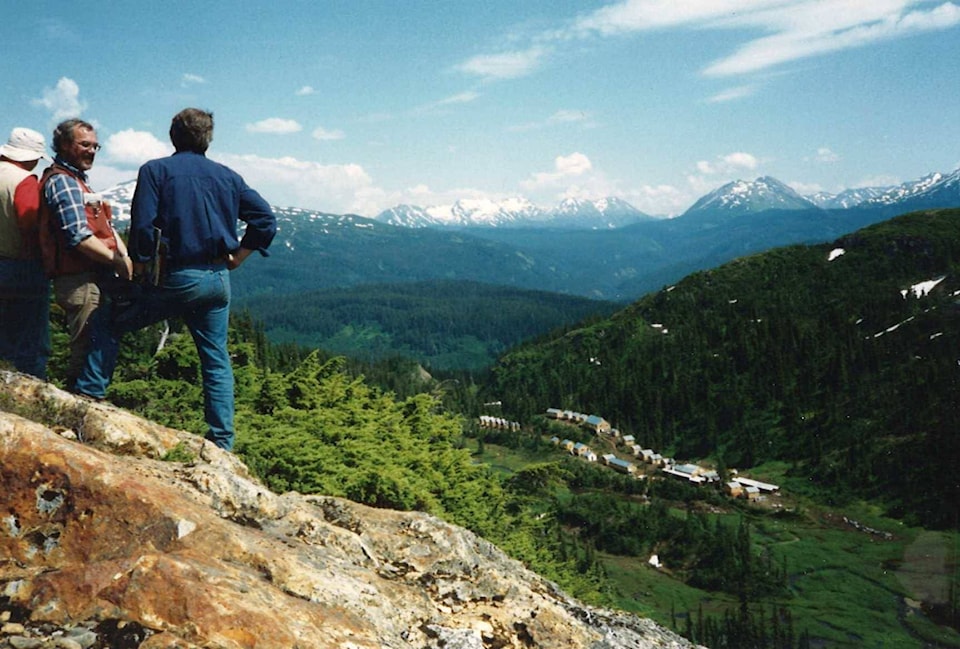Skeena Resources and the Tahltan Central Government (TCG) president are excited about a new deal that could advance the reopening of the Eskay Creek gold mine.
The B.C. junior exploration company announced this week it will acquire 100 per cent of the project, which Skeena CEO Walter Coles Jr. described as “the former highest-grade, past-producing gold mine in the world,” from Barrick Gold.
In the deal, Barrick becomes a significant shareholder in Skeena Resources picking up 22.5 million units (each being one common share and one half warrant). The shares give the gold mining giant a 12.4 per cent stake in Skeena. If the company exercises the warrants, that stake goes up to 17.2 per cent.
The deal also gives Barrick a one per cent royalty on the entire Eskay Creek property.
“Skeena is honoured to have Barrick as a significant shareholder as we endeavor to revitalize Eskay Creek,” Coles said, noting the purchase is “an important milestone in the evolution of our company.”
RELATED: Mining supply chain injects $36M into Smithers economy
Since merging with Rangold, Barrick has been looking for ways to leverage its non-Tier One assets. President and CEO Mark Bristow said turning over Eskay Creek to Skeena is a win-win.
“The Skeena team has done a great job on its evaluation of Eskay Creek and this is another good example of a transaction that delivers a value, creating opportunity for all stakeholders,” he said.
The former Eskay Creek mine is located to the west of Hwy 37 halfway between Meziadin Junction and Iskut in the heart of Tahltan country.
TCG president Chad Day said he is excited about the prospect the taking the project to his people.
“It’s going to be interesting for me to go back to the Tahltan Nation and ask them how they feel about the prospect of creating an updated impact benefit agreement with Skeena and basically pitching the prospect of that mine site possibly being open again in the next few years,” he said.
Day said the mine was good for the Tahltan when it operated between 1994 and 2008, with approximately 30 per cent of the workforce being made up of Tahltan members. It provided the direct economic benefit of employment, but also allowed many Tahltan to develop mining expertise, which they have leveraged for opportunities in other B.C. and Yukon mines.
RELATED: Australian mining giant acquires Red Chris mine
He also feels that the TCG is in a much better position today to negotiate given the 2014 Supreme Court of Canada Tsilhqot’in decision — which established Indigenous title extends to all the territory a First Nation regularly and exclusively used prior to Britain asserting sovereignty — and the Province’s implementation of the United Nations Declaration on the Rights of Indigenous Peoples (UNDRIP).
He believes they will be able to work with Skeena.
“We’ve had a pretty good relationship with them, I would say, for about the last four or five years,” Day said, noting Skeena was one of the companies involved in the formation of the BC Regional Mining Alliance two years ago, which includes the TCG, the Nisga’a Lisims Government, the Province and the Association for Mineral Exploration in B.C. (AME), as well as several other companies.
He does not know, however, if the Tahltan people will be on board or whether they will feel like there is already enough mining activity on the territory.
Over its previous lifespan of 14 years as an underground mine, Eskay Creek produced approximately 3.3 million ounces of gold and 160 million ounces of silver.
Based on a 2019 preliminary economic assessment (PEA), Skeena estimates there are still 2.2 million ounces of gold and 53.4 million ounces of silver in the ground, which the company proposes to mine by open pit methods.
The PEA cites “extensive existing infrastructure, including all-weather access roads, previously permitted tailing storage facilities (TSF) and proximity to the recently commissioned 195 MW hydroelectric facilities and linked power grid” as further evidence of the economic feasibility of the project.
The company estimates a mine life of 8.6 years processing 6,850 tonnes of ore per day.
editor@interior-news.com
Like us on Facebook and follow us on Twitter
